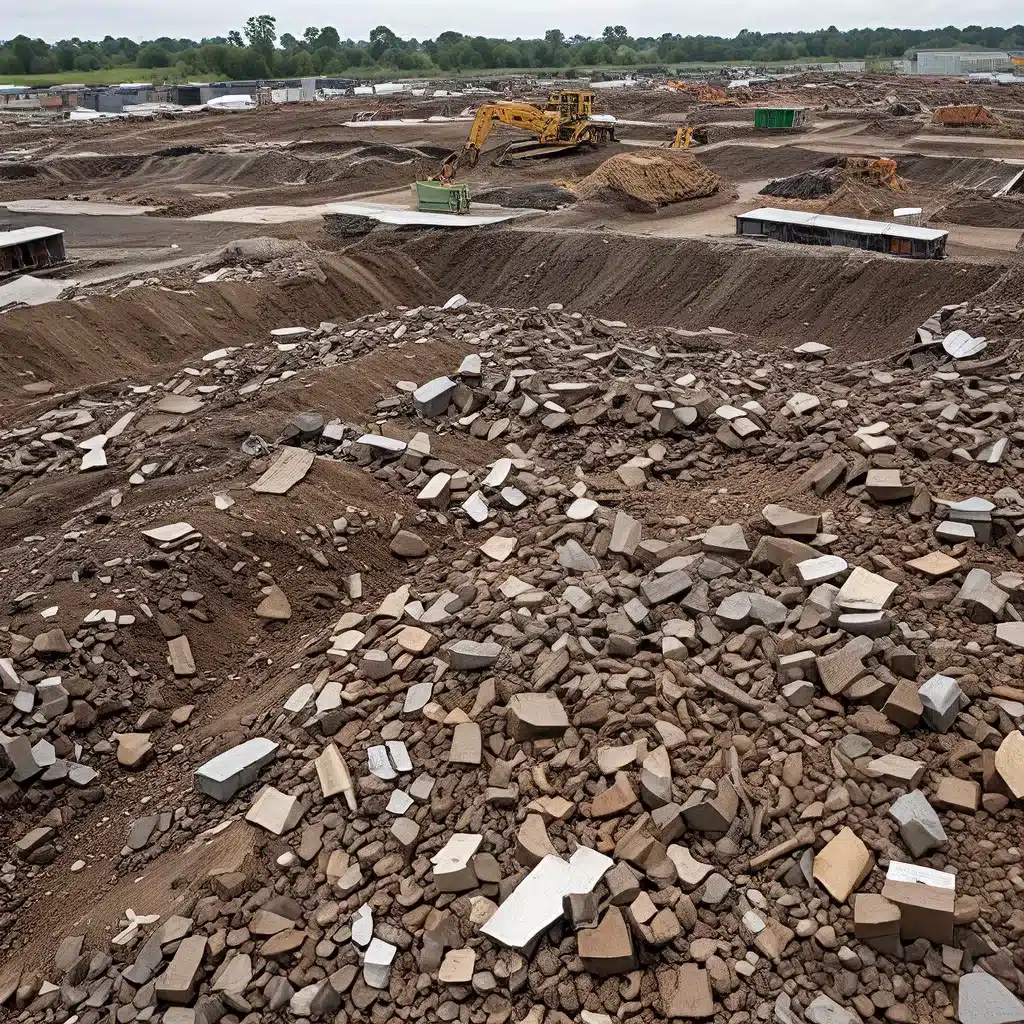
Imagine a world where the very things we’ve long considered waste and liability could become our path to prosperity. That’s the tantalizing prospect I’m about to unpack for you – the incredible potential hidden within contaminated sites.
As someone passionate about environmental protection and resourceful problem-solving, I’ve been captivated by this emerging field. It’s a radical paradigm shift, challenging us to rethink how we view the leftovers of our industrial activities. Those abandoned mines, polluted lands, and hazardous waste sites – they may just hold the key to a more sustainable, profitable future.
Shifting the Mindset: From Burden to Bounty
Let’s start by shattering a common misconception. The closure and abandonment of mining sites isn’t typically due to the complete depletion of resources. More often, it’s because the financial returns have diminished, whether due to fluctuating commodity prices, stricter environmental regulations, or other social and political factors.
As the experts at SRK Consulting point out, this paradigm shift has already begun. Mining companies are now re-assessing these seemingly depleted sites, recognizing the potential value that’s been hiding in plain sight all along.
The truth is, these contaminated areas often contain untapped riches – valuable metals, minerals, and even usable water resources. It’s akin to stumbling upon a goldmine, quite literally, if we’re willing to shift our perspective and get a little creative.
Unconventional Exploration, Innovative Recovery
To unlock this hidden value, we need to embrace unconventional exploration methods and cutting-edge extraction techniques. As the research indicates, traditional approaches may no longer suffice. We need to dig deeper, both literally and figuratively, to uncover the full potential of these contaminated sites.
This could involve advanced geochemical analyses, sophisticated hydrogeological investigations, or even the deployment of drone technology to survey hard-to-reach areas. It’s all about pushing the boundaries of what we thought was possible, and being open to new and innovative solutions.
And the payoff can be substantial. By developing more efficient metallurgical circuits or pioneering new chemical and physical extraction processes, we can recover valuable resources that were previously overlooked or deemed uneconomical. Suddenly, what was once deemed waste becomes a valuable commodity.
Waste as a Resource: Redefining Sustainability
But the benefits of this shift in mindset extend far beyond just financial gains. As the Fashion for Good report highlights, there’s a growing recognition that waste can be a powerful resource in the transition towards a more circular economy.
By extracting and repurposing the materials found in contaminated sites, we can reduce our reliance on virgin resources, minimize the environmental impact of waste disposal, and create new revenue streams. It’s a win-win-win scenario that aligns perfectly with the principles of sustainability and the growing demand for more responsible business practices.
Imagine a future where the very byproducts of our industrial processes become valuable inputs for new products and services. Where abandoned mines become hubs of innovation, churning out renewable energy, clean water, and rare earth elements. It’s a future that’s not only possible but increasingly necessary as we grapple with the mounting challenges of resource scarcity and environmental degradation.
Unlocking the Value: Strategies and Case Studies
So, how exactly can we transform these contaminated sites from liabilities into assets? The key lies in deploying a range of strategic approaches, each tailored to the unique characteristics of the site.
As the experts at SRK Consulting have demonstrated, water treatment and management technologies can play a pivotal role. By treating and managing the water resources found in these sites, we can not only create a clean water supply but also extract valuable by-products like metals or salts. This not only reduces the long-term costs and liabilities associated with waste disposal but also generates a revenue stream to offset ongoing treatment efforts.
But the potential value extends far beyond just water resources. Many contaminated sites harbor deposits of rare earth elements, precious metals, and other valuable commodities. By applying innovative extraction techniques, we can unlock this hidden wealth and transform it into a sustainable source of income.
One compelling example is the work being done at the Inland Waters facility, where they’ve pioneered a process to extract rare earth elements from acid mine drainage. What was once a costly environmental challenge has now become a strategic asset, providing a reliable supply of critical minerals while also remediating the contaminated water.
The Path Forward: Challenges and Opportunities
Of course, unlocking the value in contaminated sites is not without its challenges. There are regulatory hurdles to navigate, technological barriers to overcome, and the need for significant upfront investment. But as the case studies have shown, the potential rewards far outweigh the risks.
Moreover, the growing urgency to address environmental concerns and the increasing scarcity of natural resources are creating a powerful tailwind for this emerging field. Governments, investors, and the public are all demanding more sustainable solutions, and those who can capitalize on the opportunities presented by contaminated sites will be well-positioned to thrive.
So, as I look to the future, I see a world where the very things we’ve long considered waste and liability become our pathways to prosperity. It’s a future where we can turn contaminated sites into hubs of innovation, creating new jobs, generating sustainable revenue, and safeguarding the health of our planet.
The only question is, are you ready to join me in unlocking this extraordinary potential? The treasure trove of wealth hidden within our contaminated sites is there for the taking, if we have the courage to shift our mindset and embrace the possibilities.


